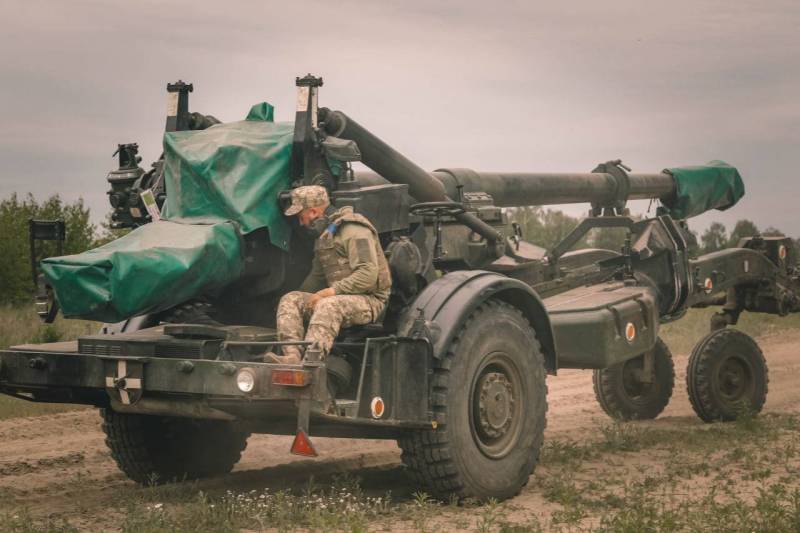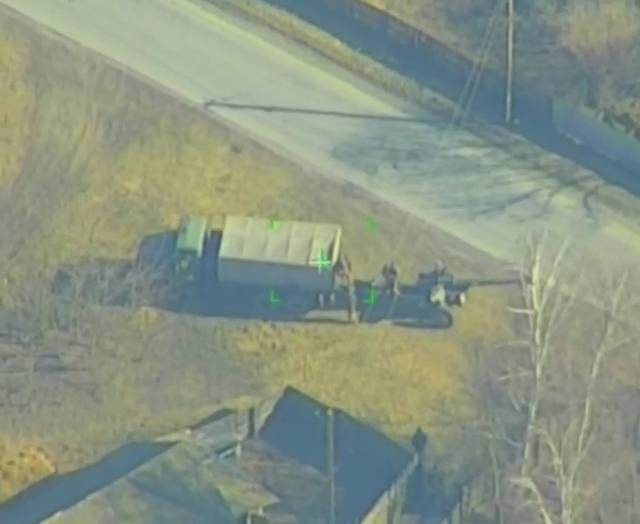Ammunition shortages and losses: the process of demilitarization of Ukrainian artillery

MLRS M142 one of the first deliveries. Photo by the Ministry of Defense of the Russian Federation
Ukrainian armed formations daily consume a large amount of various ammunition, mainly artillery shells and small arms cartridges. weapons. In the course are both their own stocks and ammunition from abroad. At the same time, the Kyiv regime has long been faced with the problem of a lack of artillery systems and ammunition for them. All this reduces the real combat effectiveness of its formations and contributes to new successes of the Russian army.
Limited opportunities
Unfortunately, there is no exact data on the consumption of ammunition by Ukrainian formations. The Kyiv regime, even if it has data of this kind, does not disclose it. At the same time, there are a number of assessments of various kinds, allowing us to draw some conclusions.
According to various sources, in recent months Ukrainian artillery fires only a few thousand shots a day. For example, Colonel Douglas McGregor, ex-adviser to former US President D. Trump, recently spoke of spending at the level of 7 shells per day. This number includes ammunition of different calibers, up to 152 and 155 mm.
The use of multiple launch rocket systems is reported almost daily, incl. imported M270 or M142. In their case, the consumption of ammunition is much lower. So, from reports on the combat operation of HIMARS systems, it follows that they fire one packet of six missiles, after which they leave the position. This method of combat use dramatically reduces the consumption of ammunition, and also reduces the possible effectiveness.

Howitzer L119 received from the UK. Photo Telegram / ChDambiev
Despite significant numbers, the actual density and effectiveness of Ukrainian artillery fire remains low. With the current size of the combat zone, there are no more than 5-7 shells per day per kilometer of the front. Even with the concentration of guns in critical areas, low indicators remain.
In addition, the terrorist nature of the use of weapons negatively affects the overall effectiveness. So, the technical advantages of the M142 MLRS are used mainly for shelling cities and civilian objects - without any sense in military terms. At the same time, even a limited number of ammunition causes sensitive damage and hits the morale of the population.
Return fire
The indicators and capabilities of Ukrainian formations should be compared with the fire potential of the Russian army. Already in the first days and weeks of the Special Operation, our troops formed powerful artillery groups in all main directions, many times superior to the enemy forces.
According to various estimates, Russian artillery fires about 20-25 thousand shells and missiles daily. During periods of increased hostilities, it is believed that this figure almost doubled. Other types of troops are also actively working, which increases the overall consumption of ammunition. As a result, in terms of nominal firepower, the enemy loses many times over to our troops.

Italian gun FH-70. Photo by the Ministry of Defense of Ukraine
The use of such potential is of great importance. Cannon and rocket artillery concentrate on the main directions and concentrate fire on important targets. Due to this, it has already been possible to destroy several fortification systems in the occupied part of Donbass, and now the following similar objects are being destroyed.
Stock and delivery
According to The Military Balance 2022, at the beginning of 2022, the Ukrainian armed forces had more than 1800 artillery systems of all classes and types. Also, a number of guns and MLRS were in storage, and these weapons were later reactivated and returned to service. Almost all such weapons and equipment went to them during the collapse of the USSR. Independently managed to produce only a few dozen systems.
In addition, large warehouses of military units, as well as several large ammunition storage bases, remained on the territory of independent Ukraine. They were attended by at least hundreds of thousands of tons of various shells, missiles, cartridges, etc. These stocks were gradually sold off on the international market. In addition, since 2014 ammunition from the warehouses has been used against the republics of Donbass. At the same time, far from all the available reserves were used up.
Warehouses of missile and artillery weapons of the Ukrainian army became one of the first targets for forced demilitarization. Strikes on the main objects of this kind were inflicted in the first weeks and months of the Special Operation. Then the process of identifying and destroying smaller warehouses began, incl. right in the war zone. As a result of such an impact, Ukrainian formations could lose several million ammunition.
In February-March, a number of foreign countries began to supply the Kyiv regime with artillery systems and various types of ammunition. First, Soviet-designed guns and the corresponding shots were transferred. Subsequently, deliveries of NATO-style weapons and ammunition began.

Howitzer M777 with a tractor truck. It will be destroyed soon. Photo by the Ministry of Defense of the Russian Federation
According to the latest data, foreign countries delivered to Ukraine several hundred artillery systems - towed and self-propelled cannon, as well as jet. In addition, a large number of shells were transferred. Thus, the United States shipped more than 1 million shells of several calibers. Hundreds of thousands of ammunition came from other countries.
However, such assistance has a very limited effect. A significant part of the artillery systems has already been knocked out or become trophies. Also, our army destroyed a large number of warehouses with foreign ammunition. Similar processes of reduction of Ukrainian artillery are successfully continuing to this day.
The contraction continues
Not so long ago, just at the beginning of this year, Ukrainian formations had a fairly large number of various artillery systems and had large stocks of shells and missiles of all necessary types. However, already at the end of February, almost immediately after the start of the Special Operation, the situation began to change.
Within a few weeks, the Russian army destroyed or took control of the main storage bases and weapons depots. In parallel, in one way or another, enemy artillery was destroyed. The situation of the Ukrainian formations worsened, and a real shortage of weapons and ammunition appeared on the horizon.
Foreign states helped the Kyiv regime with the supply of various weapons and ammunition. However, the volume of such assistance does not correspond to the scale of the problem. To date, Ukraine has lost 4500 artillery systems of all types, while foreign aid included only hundreds of guns and combat vehicles. A similar situation is observed in the field of ammunition. 1-1,5 million shells and thousands of missiles are not enough to make up for losses from Russian strikes.
In recent months, the share and role of foreign weapons and ammunition in Ukrainian artillery has been gradually growing. Now she actually cannot fight without foreign help. However, foreign states have already faced the problem of depletion of their own reserves and the impossibility of producing the required volumes of products. It cannot be ruled out that in the near future these factors will lead to a reduction in assistance to Ukraine.
In general, there is reason to believe that the state of Ukrainian artillery will continue to deteriorate. It already has limited combat capabilities, and there is simply no potential for growth. In addition, all current risks remain. The Russian army will continue to identify and engage guns in positions, as well as destroy ammunition depots and other important objects. In this case, the losses of the enemy will exceed the volume of deliveries from abroad.
Predictable results
Thus, the Russian army continues to destroy the military potential of Ukraine, and in these processes, special attention is paid to the fight against artillery. To date, methodically and without haste, it has been possible to knock out the main part of the Ukrainian guns and MLRS, and also to leave them without millions of shots. Foreign deliveries of weapons and ammunition affected the pace of such demilitarization, but did not affect the main trends.
The prospects for the current situation are clear. Our armed forces will continue to destroy artillery and other types of enemy troops and fight against the supporting infrastructure. The end result of this could be the complete destruction of Ukrainian artillery, incl. to the detriment of the combat capability of third countries that have shared their weapons. The only question is the timing of such a defeat.

Information